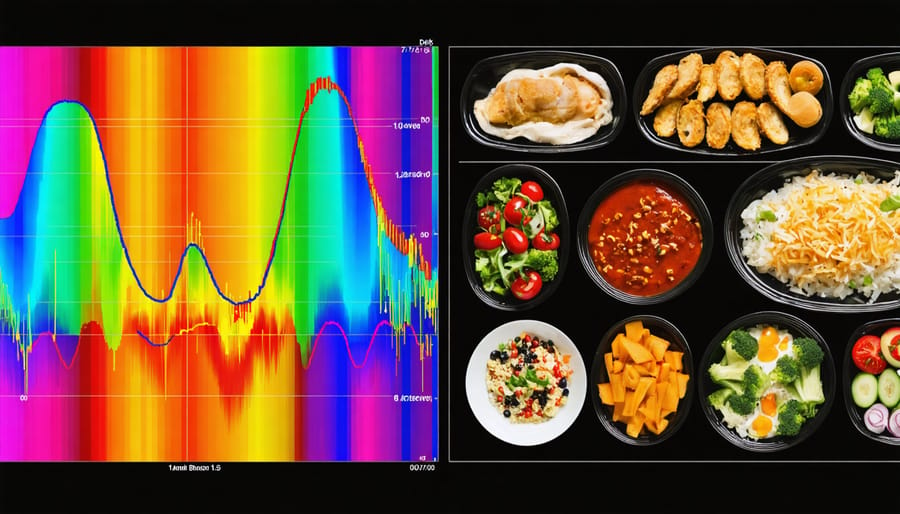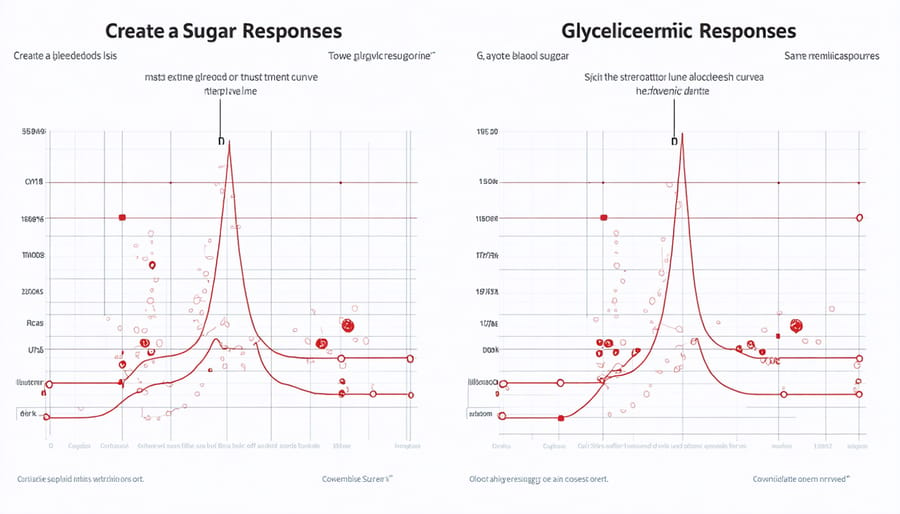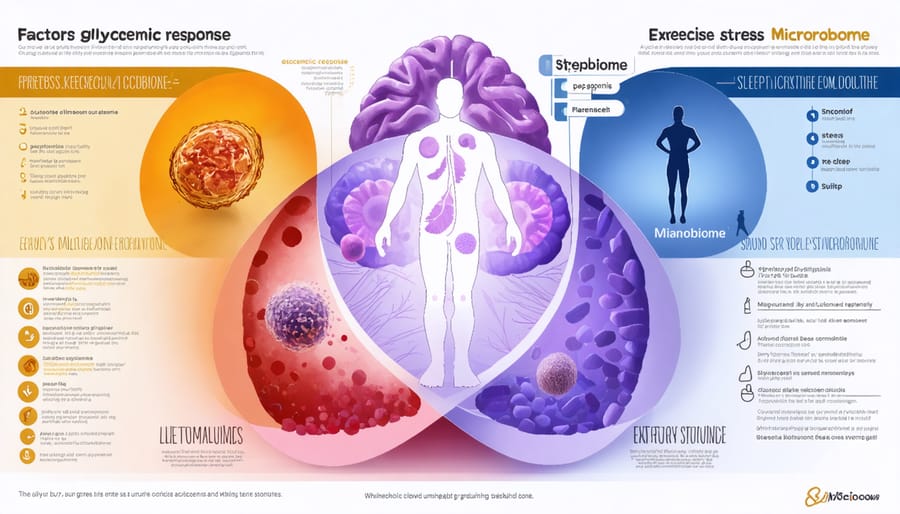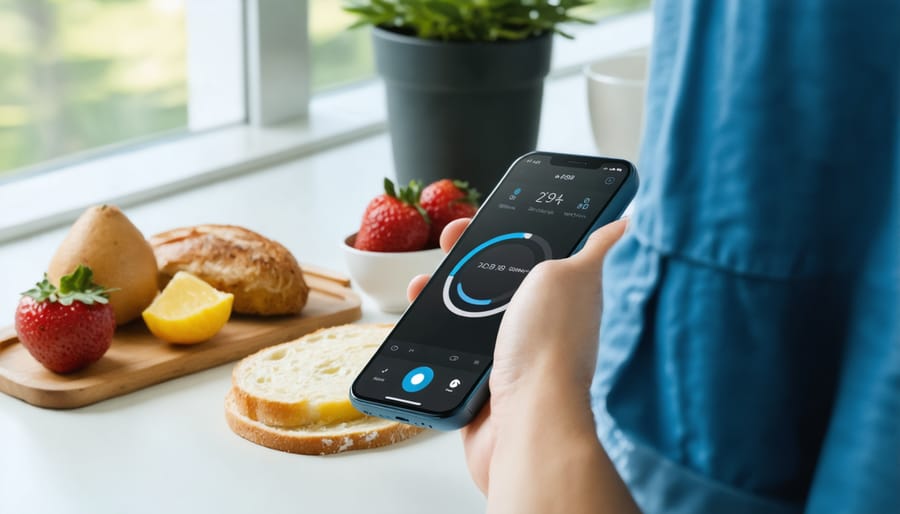
Transform your relationship with food through personalized blood sugar tracking and data-driven meal planning. Recent scientific breakthroughs reveal that identical meals can trigger dramatically different glycemic responses in different people, revolutionizing how we approach our custom wellness journey.
Unlike one-size-fits-all diet plans, personalized nutrition powered by continuous glucose monitoring and artificial intelligence now predicts exactly how your body will respond to specific foods. This groundbreaking approach analyzes your unique microbiome, lifestyle factors, and metabolic patterns to create precise, personalized nutritional recommendations that work specifically for you.
By understanding your individual glycemic response patterns, you can finally move beyond generic dietary guidelines and develop an eating strategy tailored to your body’s unique needs. Whether you’re managing your weight, optimizing your energy levels, or simply seeking better health, this personalized approach delivers results by working with your biology, not against it.
The science is clear: the future of nutrition is personal, precise, and powered by data. Your perfect meal plan isn’t your neighbor’s perfect meal plan – and that’s exactly how it should be.
Why Your Friend’s Perfect Diet Might Be Wrong for You
The Blood Sugar Puzzle
Have you ever noticed how different foods affect your energy levels throughout the day? That’s your glycemic response in action – your body’s unique way of processing carbohydrates and sugars. Think of it as your personal blood sugar fingerprint, determining whether you’ll feel energized or sluggish after a meal.
When we eat carbohydrates, our bodies break them down into glucose, causing our blood sugar levels to rise. How quickly and dramatically this happens varies significantly from person to person. Some of us might experience an energy crash after eating a bowl of pasta, while others feel perfectly fine. These individual differences explain why your friend can enjoy a morning bagel and stay focused, while you might need a protein-rich breakfast to avoid the mid-morning slump.
Understanding your unique glycemic response is like solving a puzzle that directly impacts your energy, mood, and even weight management goals. The fascinating part? Two people can eat exactly the same meal and experience completely different blood sugar responses. This is why personalized nutrition is becoming such a game-changer in the health and wellness world – it acknowledges that when it comes to food, one size definitely doesn’t fit all.

Your Unique Food Fingerprint
Have you ever wondered why your best friend can enjoy pasta without any issues while you feel sluggish after the same meal? The answer lies in your unique “food fingerprint” – a combination of factors that make your body’s response to food distinctly yours.
Think of your body as a complex orchestra, where genetics, lifestyle, and gut microbiome all play different instruments. Your genetic makeup influences how you process certain foods, while daily habits like sleep patterns and exercise routines conduct the tempo. But perhaps the most fascinating musician in this ensemble is your gut microbiome – the trillions of tiny organisms that call your digestive system home.
Just like your fingerprint, this combination is uniquely yours. I learned this firsthand when my sister and I followed the same meal plan but experienced completely different results. While she thrived on a breakfast of oatmeal and fruit, I discovered my body responded better to eggs and avocado.
Understanding these individual differences is revolutionizing how we approach nutrition. Rather than following one-size-fits-all diet plans, we’re moving toward personalized approaches that consider your unique biological symphony.

Smart Ways to Decode Your Body’s Food Signals

Track Your Food Journey
Ever wondered why some foods make you feel energized while others leave you sluggish? The key to understanding your body’s unique response lies in tracking your food journey. Think of it as becoming a detective in your own wellness story!
Start with a simple food diary – but let’s make it fun and insightful. Use your smartphone to snap quick photos of your meals and note how you feel 30 minutes, 1 hour, and 2 hours after eating. Modern apps like continuous glucose monitors (CGMs) can take this experience to the next level, showing you real-time data about how different foods affect your blood sugar.
The magic happens when you begin to notice patterns. Maybe that morning smoothie you thought was healthy actually sends your energy crashing by mid-morning. Or perhaps you’ll discover ways to transform your meals by pairing certain foods together for better results.
Consider tracking these key elements:
– Meal timing and portion sizes
– Energy levels throughout the day
– Mood and mental clarity
– Physical responses like hunger or fullness
– Sleep quality
Remember, this isn’t about judgment – it’s about discovery and understanding. Your body’s responses are as unique as your fingerprint, and tracking helps you unlock the combination that works best for you. Start small, stay consistent, and watch as the pieces of your personal nutrition puzzle come together!
Make Friends with Your Food
Have you ever noticed how some foods make you feel energized while others leave you sluggish? That’s because our bodies respond differently to various foods and portions. By becoming more attuned to these personal responses, you can create eating patterns that work best for you.
Start by keeping a simple food diary, noting not just what you eat but how you feel afterward. This practice, combined with mindful eating habits, can reveal patterns in your glycemic responses.
Here’s what I’ve learned from my own journey: combining proteins with carbs often leads to more stable energy levels. For instance, adding a handful of almonds to my morning toast has made a world of difference in preventing mid-morning crashes.
Try these combination strategies:
– Pair fruit with protein (apple slices with nut butter)
– Add healthy fats to carb-heavy meals (avocado with your sandwich)
– Include fiber-rich vegetables with every main meal
– Experiment with portion timing (smaller, more frequent meals might work better for you)
Remember, there’s no one-size-fits-all approach. What works for your friend might not work for you, and that’s perfectly okay! The key is to observe, adjust, and create your own personal blueprint for balanced meals that keep your blood sugar steady and your energy levels optimal throughout the day.
Real Life Success: My Personal Food Revolution
When I first discovered personalized nutrition through glycemic response tracking, I was skeptical. Like many of you, I’d tried countless diets that worked for others but left me feeling frustrated and defeated. That all changed when I started paying attention to how my body specifically responded to different foods.
My journey began six months ago when I noticed that my “healthy” breakfast of oatmeal and banana was leaving me sluggish by mid-morning. Through continuous glucose monitoring and careful food journaling, I discovered that my body responded much better to a breakfast of eggs with avocado and a side of berries. The difference was remarkable – steady energy levels that lasted until lunch!
One of my favorite successful meal discoveries has been my personalized power bowl. While quinoa is often touted as a superfood, I learned that my body maintains better glucose levels when I swap it for cauliflower rice. I now combine it with grilled chicken, roasted vegetables, and a handful of chickpeas. The best part? My energy remains stable for hours, and I don’t experience the afternoon crash I used to think was normal.
Here’s what surprised me most: foods I assumed were “bad” sometimes worked well for my body. For instance, sourdough bread causes a much gentler glycemic response for me than the gluten-free alternatives I’d been forcing myself to eat. This personalized approach has taught me to trust my body’s signals rather than following generic food rules.
The results have been transformative. Not only have I maintained stable energy levels throughout the day, but I’ve also noticed improvements in my sleep quality and fewer sugar cravings. My favorite weekend treat – dark chocolate with almonds – still has a place in my diet because I’ve learned when and how to include it without disrupting my glucose levels.
Remember, what works for me might not work for you, and that’s exactly the point of personalized nutrition. The key is to start paying attention to your body’s unique responses and adjust accordingly. It’s not about restriction; it’s about finding your personal formula for feeling your best.
As we’ve discovered, personalized nutrition through glycemic response prediction isn’t just another trend – it’s a revolutionary approach to understanding your body’s unique needs. By paying attention to how different foods affect your blood sugar levels, you can make informed choices that work specifically for you, not just what works for others.
I remember when I first started tracking my glycemic responses, I was surprised to find that some “healthy” foods weren’t actually the best fit for my body. This journey has taught me that nutrition isn’t one-size-fits-all, and that’s exactly what makes it so exciting!
Ready to start your personalized nutrition journey? Begin by keeping a simple food diary and noting how different meals make you feel. Consider working with a healthcare provider who can guide you through more detailed tracking and interpretation of your body’s responses. Remember, small changes can lead to significant improvements in your energy levels, mood, and overall wellbeing.
The future of nutrition is personal, and you’re now equipped with the knowledge to take those first steps toward a more tailored approach to eating. Trust your body, embrace the learning process, and enjoy discovering what truly works for you!



